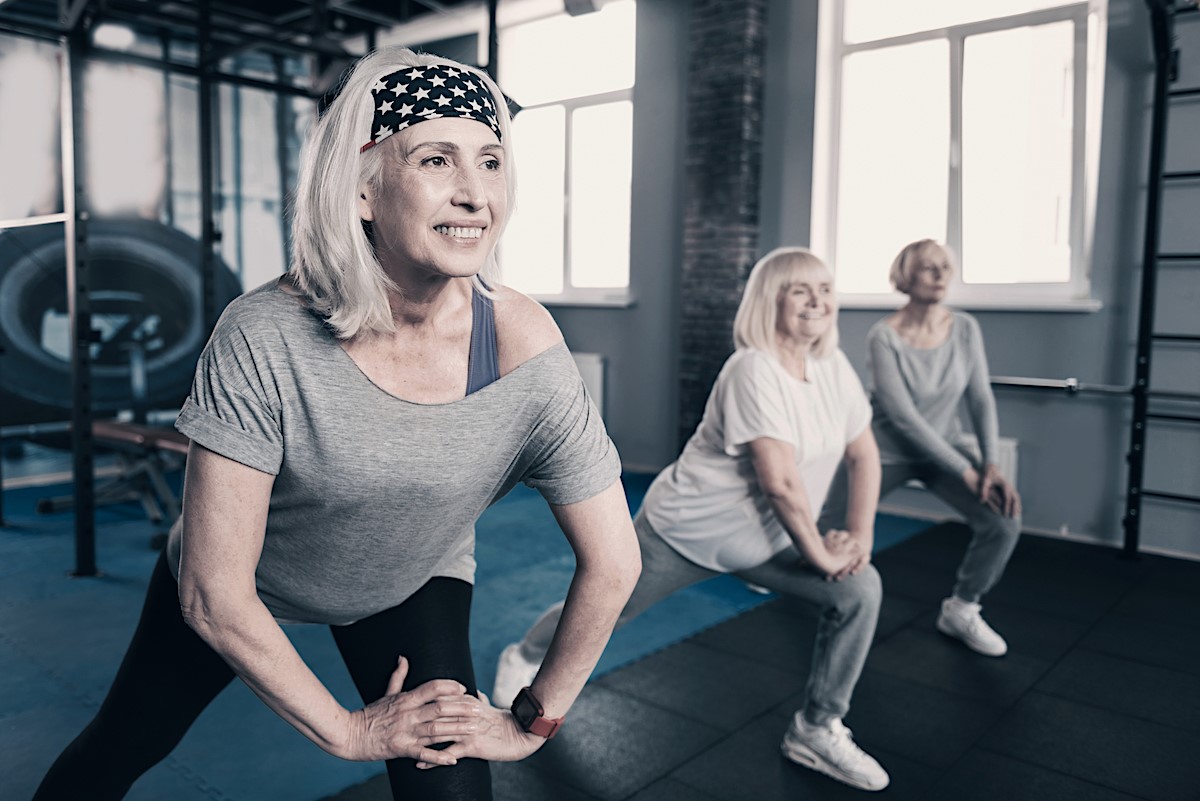Functional Fitness: How to Stay In Shape for Everyday Life

Why should you work out regularly?
For big muscles? To lose weight? To beat your brother-in-law at golf?
Sure, all of those are good reasons for some people.
But what about working out so you are better prepared for the activities of everyday life , like carrying in groceries and putting them up? Like having the stamina for a busy day of errands and grandkids? Or climbing up and down the stairs without getting winded?
That’s the idea behind functional fitness , an approach that’s increasingly popular with all kinds of people, including those over 50 who want to maintain their independence and quality of life without spending countless hours in a gym.

As we age, we lose muscle mass and bone density. That’s where the fear of frailty comes in. It’s what causes us to worry about falling later in life. It’s also what inhibits us from enjoying activities without getting hurt. Think of a guy who can lift heavyweight at the gym but throws out his back picking up a suitcase.
Functional fitness helps keep us strong and agile, with the endurance to live life the way we want to – even if “fitness” for its own sake isn’t necessarily the priority.
And, if you’re worried that working out will bulk you up like an action hero, we can’t stress enough: That’s just not going to happen.
“I tell people, ‘You’re not going to get huge muscles. You’re going to get useful muscles,’” says Michael, a trainer who works with many people over 50.
It has gone beyond being a trend. Most gyms, studios, and trainers are now familiar with functional training.

Compare functional exercises to traditional weightlifting, which usually focuses on one muscle at a time. You’re often seated, the range of motion is restricted – and the movements are not related to daily life.
Functional exercises help muscles work together. Body control, mobility, posture, safety, and balance are also primary goals. Some people used to work out on only machines to find functional exercise more challenging.
Squats and pushups are good examples. So are lunges, which are common in tasks like vacuuming and yardwork.
As WebMD puts it, functional fitness is “about training your body to handle real-life situations.” That means exercises focused on “building a body capable of doing real-life activities in real-life positions, not just lifting a certain amount of weight in an idealized posture created by a gym machine.”
We’re here to help you with safe, functional programs to boost your fitness, confidence.

For big muscles? To lose weight? To beat your brother-in-law at golf?
Sure, all of those are good reasons for some people.
But what about working out so you are better prepared for the activities of everyday life , like carrying in groceries and putting them up? Like having the stamina for a busy day of errands and grandkids? Or climbing up and down the stairs without getting winded?
That’s the idea behind functional fitness , an approach that’s increasingly popular with all kinds of people, including those over 50 who want to maintain their independence and quality of life without spending countless hours in a gym.

Functional Fitness: How to Stay In Shape for Everyday Life
As we age, we lose muscle mass and bone density. That’s where the fear of frailty comes in. It’s what causes us to worry about falling later in life. It’s also what inhibits us from enjoying activities without getting hurt. Think of a guy who can lift heavyweight at the gym but throws out his back picking up a suitcase.
Functional fitness helps keep us strong and agile, with the endurance to live life the way we want to – even if “fitness” for its own sake isn’t necessarily the priority.
And, if you’re worried that working out will bulk you up like an action hero, we can’t stress enough: That’s just not going to happen.
“I tell people, ‘You’re not going to get huge muscles. You’re going to get useful muscles,’” says Michael, a trainer who works with many people over 50.
It has gone beyond being a trend. Most gyms, studios, and trainers are now familiar with functional training.

How It Is Different
Compare functional exercises to traditional weightlifting, which usually focuses on one muscle at a time. You’re often seated, the range of motion is restricted – and the movements are not related to daily life.
Functional exercises help muscles work together. Body control, mobility, posture, safety, and balance are also primary goals. Some people used to work out on only machines to find functional exercise more challenging.
Squats and pushups are good examples. So are lunges, which are common in tasks like vacuuming and yardwork.
As WebMD puts it, functional fitness is “about training your body to handle real-life situations.” That means exercises focused on “building a body capable of doing real-life activities in real-life positions, not just lifting a certain amount of weight in an idealized posture created by a gym machine.”
Does functional fitness sound like a good idea for you?
We’re here to help you with safe, functional programs to boost your fitness, confidence.





































































































